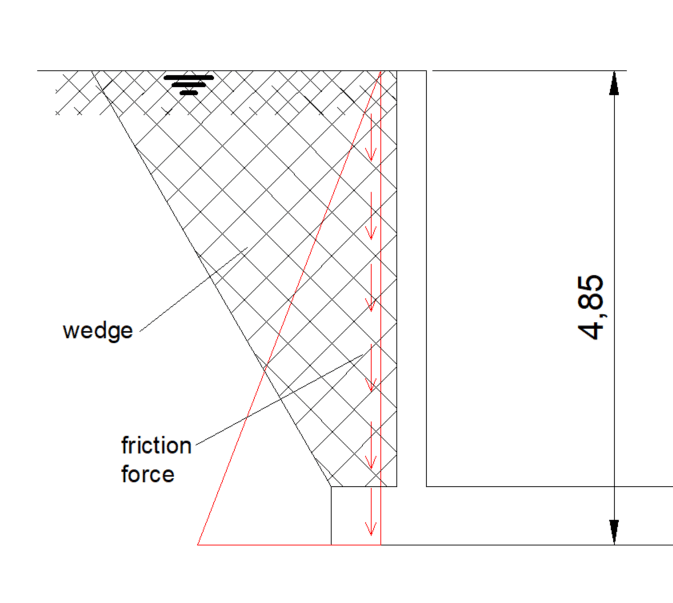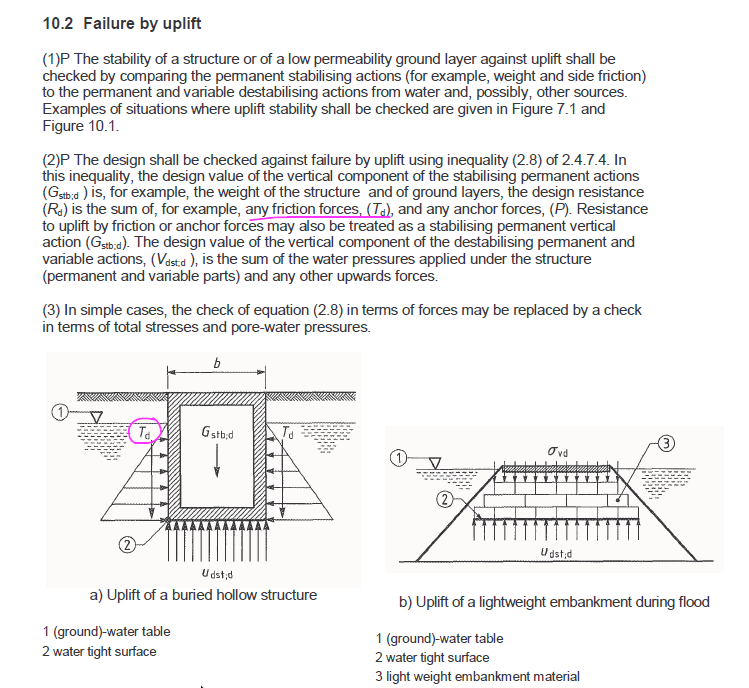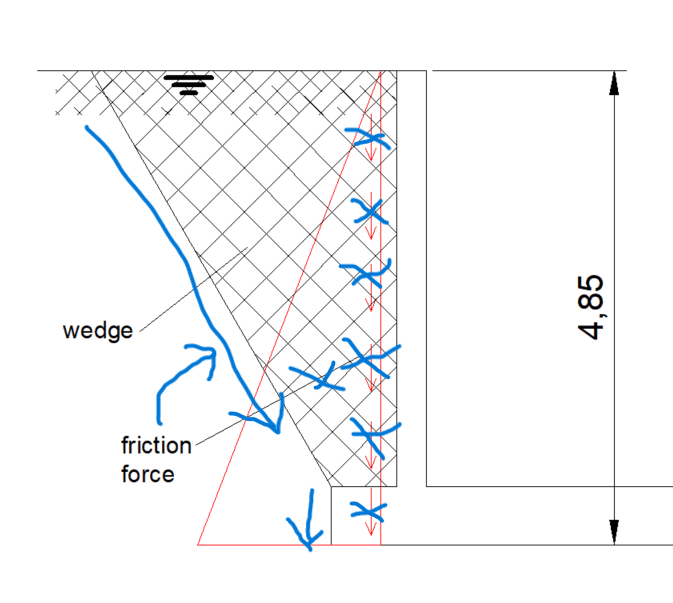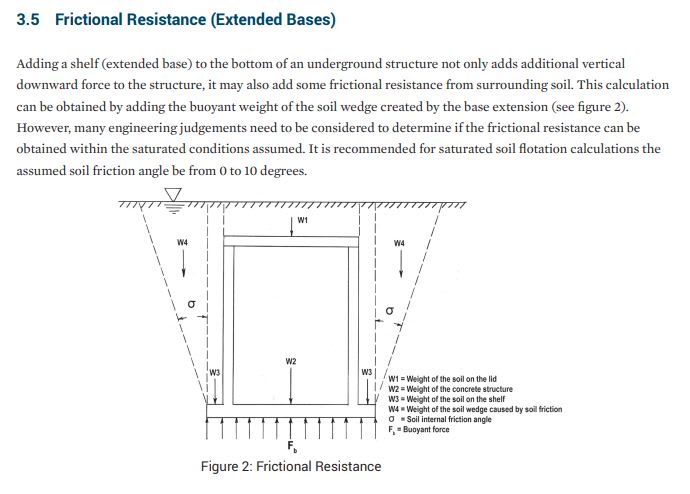Eng.nmarko
Structural
- Jul 29, 2019
- 9
Hi guys,
I'm having a storm water retention tank which is 4.85 m deep in the ground, it is in a flood area, therefore ground water is considered full depth of the tank, base is about 51x21 m.
It is open, no top slab, as a pool. Bottom slab is 0.6 m deep, walls are 0.3 m. My question is if I use a bottom slab overhangs, is it correct to activate ground as a wedge and use the wedge weight against the uplift force. Also what is the cohesion force for saturated soil, I would use it as a friction force for stabilizing force as well. See attached picture for the reference.

Many thanks,
Marko
I'm having a storm water retention tank which is 4.85 m deep in the ground, it is in a flood area, therefore ground water is considered full depth of the tank, base is about 51x21 m.
It is open, no top slab, as a pool. Bottom slab is 0.6 m deep, walls are 0.3 m. My question is if I use a bottom slab overhangs, is it correct to activate ground as a wedge and use the wedge weight against the uplift force. Also what is the cohesion force for saturated soil, I would use it as a friction force for stabilizing force as well. See attached picture for the reference.

Many thanks,
Marko



